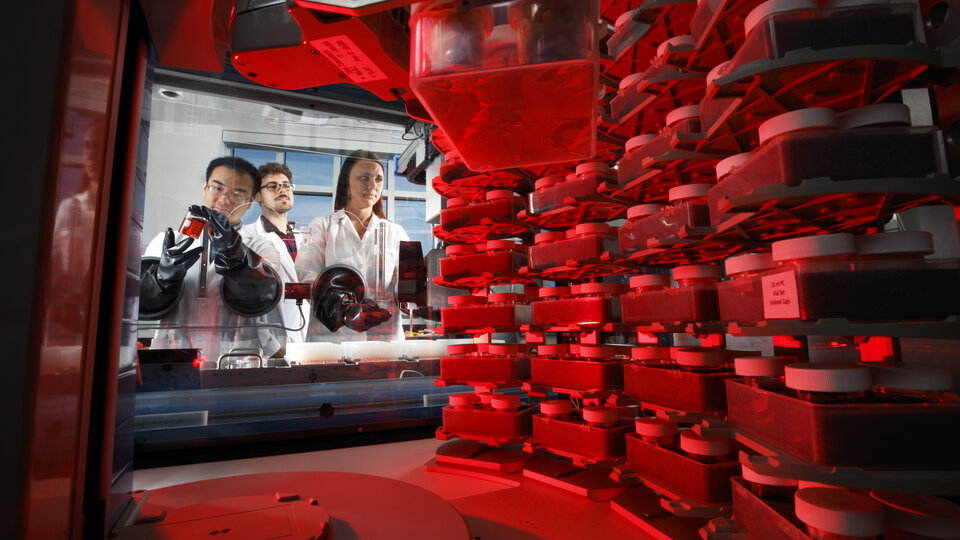AiMS consists of multiple steps that reflect the digestive process, including mastication (chewing), acid hydrolysis (stomach), enzymatic degradation (stomach and small intestine), and nutrient adsorption (small intestine). The digestion process has been miniaturized so that it can be accomplished in 96-well plates using automation for critical steps.
Publications using AiMS
Milling and powder-dosing
Seed from individual genotypes of the plant population of interest are dispensed into individual polycarbonate vials containing two, 7/16” stainless steel ball bearings. Five vials are housed in an individual rack and placed into a hotel that holds 32 racks. The Spinnaker robotic arm feeds each individually rack into a GenoGrinder 2025 where the vials are milled at 1600 rpm for 6 minutes. Milled powders from each genotype are then put into specialized canisters for the Flex Powderdose system, which then accurately dispenses 20 mg into pre-programmed positions in 96-well plates. The Powderdose deck holds up to 12, 96-well plates, allowing technical replication and sophisticated statistical designs for plate layouts.
Digestion and Dialysis
The dispensed powders are then hydrated in 425 µl water and cooked in boiling water for 20 minutes. Samples are acidified with HCl treated with protease (pepsin) for 1 hour (stomach phase) and the small intestinal phase is initiated by adding sodium maleate buffer (pH = 6, containing 1 mM CaCl2) and NaHCO3 along with Pancreatin and amyloglucosidase. Post digestion, samples are transferred to 96-well DispoDialyzer plates (MWCO 1,000) and dialyzed against water with agitation from individual 4.7mm tumble stir bars in each well and VP tumble stirrer to facilitate the removal of small molecules.
Fermentation
The digested and dialyzed material is transferred to 1 mL (deep-well) 96-well plates and fecal microbiomes (50ul) and 50 ul of 10x fermentation media (reduced by the addition of 50% Oxyrase) are added in an anaerobic chamber. Fermentations are incubated anaerobically for 16 hours at 37 ℃. Following the fermentation, the plates are centrifuged and the microbiome pellets are used for subsequent DNA extraction/16S amplicon sequencing while the supernatant is retained for SCFA analysis.
